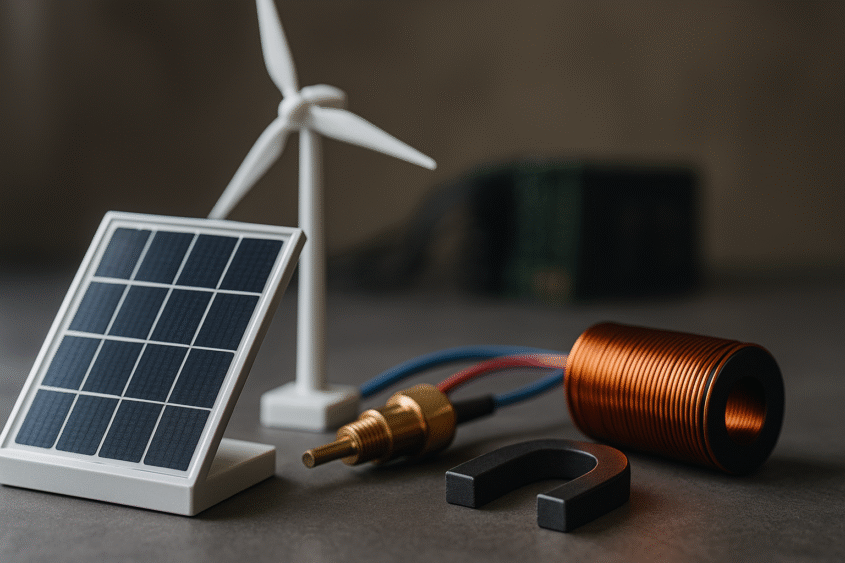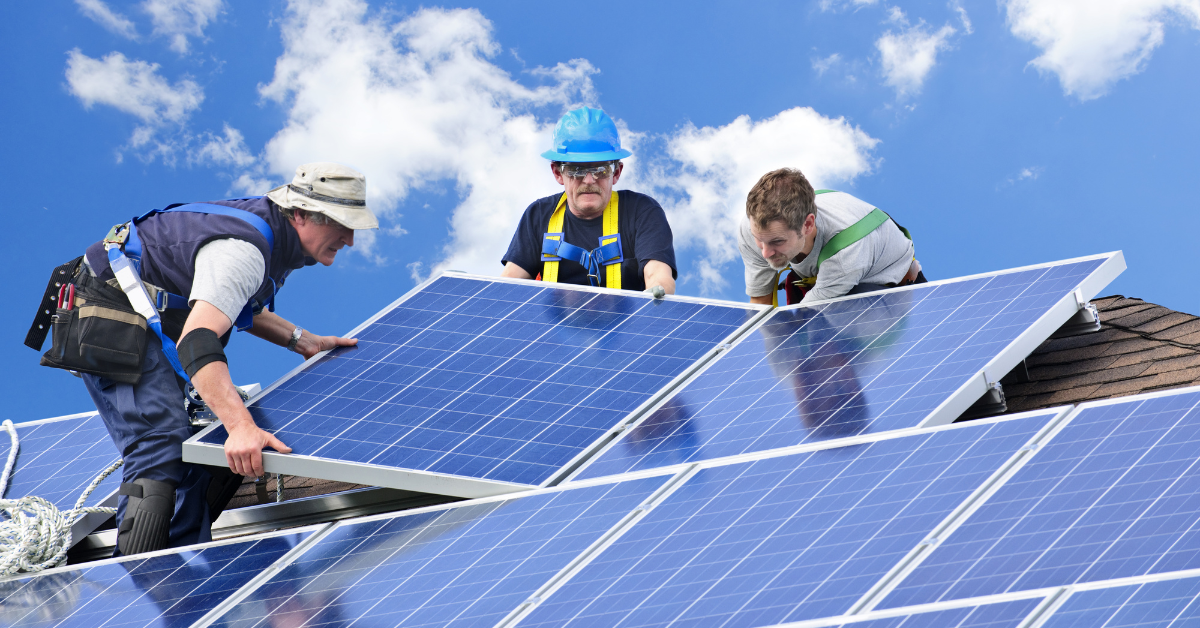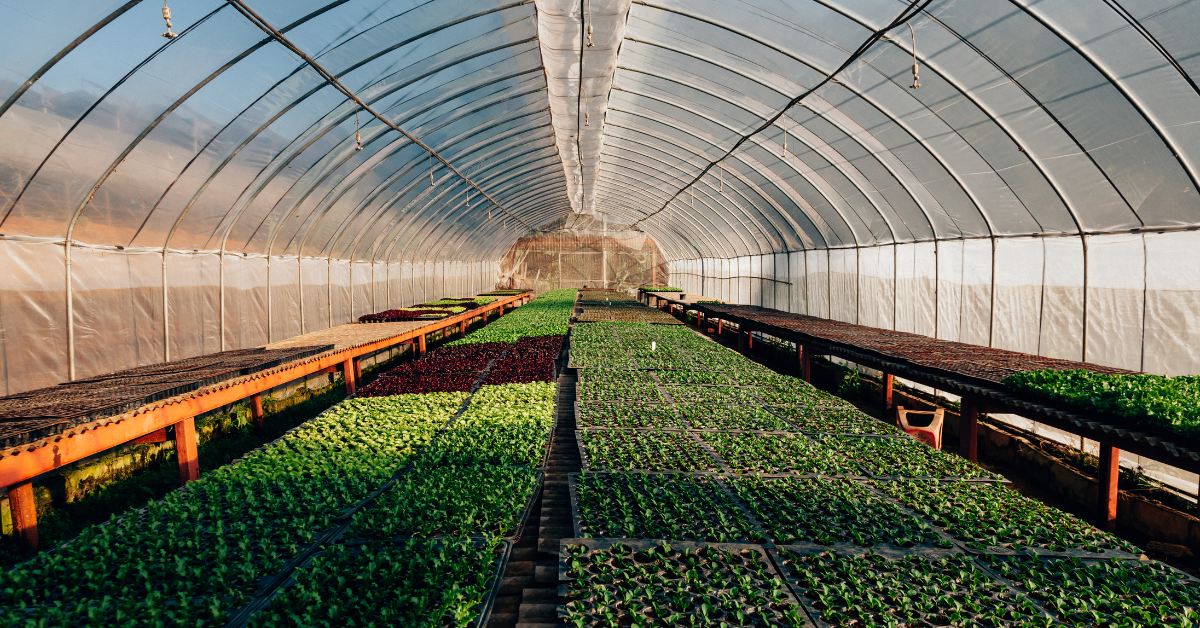What Is Energy Harvesting? How It Works, Core Technologies, and Real-World Applications

What is energy harvesting? In simple terms, it’s the practice of capturing small amounts of ambient energy—light, heat, motion, or radio waves—and converting it into electrical power for low-consumption electronics.
Unlike large-scale renewable energy (solar farms, wind parks), energy harvesting focuses on micro energy generation at the device level. This shift matters because modern systems—from industrial sensors to wearables—benefit enormously from self-powered devices that reduce or eliminate battery changes, wiring, and maintenance.
In this post, we explain how energy harvesting works, the main ambient energy sources and technologies, where it’s used today, and the benefits and challenges you should weigh before adopting it.
Definition and Scope
Energy harvesting (also called power harvesting or energy scavenging) is the process of collecting energy that already exists in the environment and turning it into small but usable electrical power.
Typical output levels range from microwatts to milliwatts, which is sufficient for many wireless sensor networks, ultra-low-power microcontrollers, and duty-cycled radios. The goal is not to run energy-hungry loads but to enable long-life, maintenance-light electronics in places where replacing or recharging batteries is inconvenient, costly, or unsafe.
How Energy Harvesting Works
Most systems follow a four-stage chain:
- Capture – An interface couples to an ambient energy source (light, vibration, heat gradient, or RF radiation).
- Conversion – A transducer converts the source into electricity: photovoltaic cells for light, piezoelectric or electromagnetic elements for motion, thermoelectric generators for heat, and rectennas for radio frequency signals.
- Power conditioning and storage – Power management integrated circuits (PMICs) regulate, boost, or rectify the harvested energy. The output is stored in a micro-battery, rechargeable coin cell, or supercapacitor.
- Utilization – The device operates directly from storage or from a regulated rail. Designers typically duty-cycle sensors and radios, waking them briefly to sample and transmit, then returning to sleep to stay within the harvested energy budget.
A practical example is a vibration-powered bridge sensor: ambient vibrations from traffic are converted via a piezoelectric harvester, buffered in a capacitor, and used intermittently to power a microcontroller and a low-power radio that reports structural health data.
Primary Ambient Energy Sources
Solar and Indoor Light
Photovoltaic (PV) cells are the most mature energy harvesting technology. Outdoors, small PV panels provide relatively high energy density throughout daylight hours. Indoors, specialized PV optimized for diffuse lighting can feed sensors, electronic shelf labels, and e-paper displays. Indoor yield is lower than outdoors, but modern ultra-low-power electronics make it viable.

Mechanical and Vibration Energy
Mechanical motion can be captured through piezoelectric elements (which generate charge under strain) or electromagnetic harvesters (coil and magnet). Sources include industrial machinery, HVAC ducts, vehicle movement, human gait, or even keystrokes. Mechanical harvesting is compelling in factories and transportation, where vibration is abundant.
Thermal Energy (Temperature Gradients)
Thermoelectric generators (TEGs) exploit the Seebeck effect to convert a temperature difference into voltage. They are useful wherever there is a persistent gradient: engine manifolds, steam pipes, or even the difference between skin and ambient air for wearables and medical devices. Output scales with the magnitude of the temperature delta and the quality of thermal coupling.
Radio Frequency (RF) Energy
Ambient RF from cellular networks, Wi-Fi, and broadcast signals can be rectified by rectennas to produce DC power. Energy density is modest, so RF is best suited to ultra-low-duty applications or as a complementary source in hybrid harvesters. Purpose-built RF transmitters can raise available power for specific applications such as smart retail tags.
Core Energy Harvesting Technologies
- Photovoltaic cells (silicon, dye-sensitized, organic): Best for light; indoor-specific variants improve efficiency under artificial lighting.
- Piezoelectric generators: Convert strain and vibration into charge; durable and compact; output depends on frequency and amplitude of motion.
- Electromagnetic harvesters: Coil-magnet motion devices excel at lower frequencies and higher displacements than piezo solutions.
- Thermoelectric generators: Solid-state, no moving parts; require consistent temperature differential; benefit from good heat sinking and insulation strategy.
- Triboelectric nanogenerators (emerging): Use contact electrification and electrostatic induction; promising for wearables and surfaces where friction is common.
- RF harvesters (rectennas): Capture radio waves; extremely low power, but suitable for intermittent sensing and ID applications.
Applications in Modern Technology
Wireless Sensor Networks and Industrial IoT
Factories, refineries, and utilities deploy thousands of condition-monitoring nodes on pumps, bearings, and motors. Energy harvesting applications here reduce wiring, extend deployment coverage, and cut maintenance costs. Nodes may harvest vibration from machinery or heat from steam lines to power sensing and short telemetry bursts.
Smart Buildings and Home Automation
Self-powered switches, occupancy sensors, and temperature/humidity nodes eliminate battery swaps and simplify retrofits in commercial buildings. Light-harvesting or thermal-harvesting devices integrate seamlessly into facilities where low maintenance is essential.
Wearables and Healthcare
From activity trackers to skin-mounted patches, harvesting body heat or motion can extend runtime and reduce charging frequency. Research continues into implantable devices that minimize or avoid battery replacement surgeries by scavenging physiological energy.
Transportation and Mobility
Automotive tire-pressure monitoring, railcar tracking, and cargo sensors benefit from vibration-based harvesting, enabling status updates without wiring or frequent battery service. In smart logistics, self-powered tags can report location and environmental conditions.
Environmental and Agricultural Sensing
Soil moisture probes, weather stations, and wildlife trackers often operate far from infrastructure. Solar-assisted nodes with robust power management run for years, reporting intermittently through LPWAN or satellite links.

Benefits: Why Teams Adopt Energy Harvesting
- Lower maintenance and total cost of ownership: Fewer battery replacements and fewer truck rolls.
- Sustainability gains: Reduced battery waste and alignment with sustainable power solutions targets.
- Deployment flexibility: Sensors can be placed where wiring is impractical or hazardous.
- Longevity and reliability: Properly engineered systems can operate for years, especially when energy supply and duty cycle are balanced.
- Scalability: Roll out thousands of endpoints without the logistical burden of battery programs.
Challenges and Trade-Offs
- Intermittent and variable supply: Sunlight, vibration, and temperature deltas change over time. Systems must tolerate power gaps.
- Low energy budgets: Most harvesters yield microwatt–milliwatt levels; designs must prioritize ultra-low-power components, aggressive sleep states, and efficient radios.
- Conversion and storage losses: PMIC efficiency, leakage, and storage aging (especially at elevated temperatures) reduce delivered energy.
- Bill of materials and integration complexity: Harvesters, storage, and power management add cost and design effort. Mechanical coupling for vibration/thermal systems requires careful engineering.
- Environmental constraints: Dust, humidity, shock, and temperature cycles can degrade performance; enclosures and mounting matter.
Design Considerations and Best Practices
- Start with an energy budget. Estimate worst-case harvested power, average device consumption, and duty cycle. Size storage to bridge dark periods or idle intervals.
- Choose the right harvester for the source. Select PV for reliable light; piezo or electromagnetic for known vibration spectra; TEGs for stable gradients; RF for ultra-low-power tags.
- Optimize the power chain. Use PMICs with low cold-start thresholds, good peak efficiency at target power levels, and maximum power point tracking (MPPT) for PV.
- Engineer the coupling. Mount piezo elements where strain is highest; ensure good thermal paths for TEG hot sides and adequate heat sinking on cold sides; orient PV to expected illumination.
- Duty-cycle aggressively. Sample infrequently, compress data, and transmit briefly using low-energy protocols (BLE, Zigbee, Thread, LoRaWAN), or buffer data for batched transmissions.
- Design for variability. Implement adaptive sampling rates and dynamic thresholds when energy availability drops; consider hybrid harvesting (e.g., PV + RF).
- Validate in the field. Lab conditions rarely match real environments. Log harvested power and consumption over time to refine firmware and hardware.
Frequently Asked Questions
How does energy harvesting work in practice?
A harvester captures ambient energy, a converter and PMIC make it usable, storage buffers it, and the device consumes it in short bursts. Successful designs minimize average power and align activity windows with available energy.
What are the primary sources for harvesting?
Light (indoor and outdoor), mechanical vibration and motion, temperature differences, and radio frequency signals. The best choice depends on the environment and the device’s power profile.
Where is energy harvesting most useful today?
Industrial monitoring, smart buildings, environmental sensing, logistics, and wearables. These use cases benefit from low maintenance, difficult access, or large deployment scale.
What are the main benefits and challenges?
Benefits include reduced maintenance, sustainability, and deployment flexibility. Challenges include intermittent sources, low energy budgets, conversion/storage losses, and integration complexity.

The Road Ahead
Progress in materials science (high-efficiency PV for low lux, robust piezo ceramics, improved thermoelectric materials), ultra-low-power silicon, and intelligent power management is expanding what’s feasible. As wireless sensor networks proliferate and energy harvesting technologies improve, expect more self-powered devices that run for years with minimal human intervention. Pairing harvesting with smarter firmware—adaptive duty cycles, edge analytics to reduce transmissions, and resilient storage—will push systems closer to truly maintenance-free operation.
Conclusion
Energy harvesting transforms ambient energy sources into practical power for small electronics, enabling networks of sensors and devices that are simpler to deploy, cheaper to maintain, and better aligned with sustainability goals. When teams take a methodical approach—starting with realistic energy budgets, selecting appropriate power harvesting methods, and engineering robust coupling and power management—energy harvesting can move from promising concept to reliable, production-grade infrastructure.
If you want, I can add a concise meta description (≤155 characters), propose an SEO slug and title tag variants, or tailor an internal-linking block to your site’s existing content.



